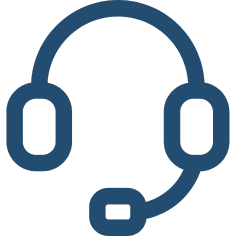Staff training is a major investment, but it is a necessity to ensure your employees continue to grow and are competent in all things relevant to their job description. More startups are exploring online training as a viable pathway for employee development. If implemented strategically, it can substantially boost return on investment (ROI). Learn the ins and outs of ROI and how it factors into your e-learning initiative.
How online training benefits ROI
Some companies may hesitate to invest in training, believing it doesn’t impact profit margins, employee retention, or customer UX. However, the numbers paint a more promising story. According to a report from the American Society for Training and Development, companies that invest $680 in training per employee generate a 6% increase in total shareholder return (TSR). Furthermore, the top 50% of spenders in formal training/education saw a 36.9% increase in TSR, compared to just 19.8% for the bottom 50% of spenders.
With these statistics in mind, here is how you can calculate your ROI when factoring in what you spend versus what you earn back.
Cost of implementation
Tally the expenses associated with online training. Most notably, this will include the continued cost of the learning management system, your e-learning plateform. Other overhead expenditures may include:
- Course creation fees, particularly if outsourcing to a third-party vendor
- Hiring moderators and instructors
- Other SaaS products, such as graphic design tools and infographic makers
E-learning vs. traditional classroom learning cost comparison
How much more money do you save by transitioning to fully remote or hybrid training versus a traditional learning format? Consider the costs associated with brick-and-mortar classrooms and the costs eliminated by switching to an online LMS. Spending minimized or eliminated altogether may include:
- Venue rental
- Travel fees
- Paper and printing fees
To calculate how much you save by making the switch, use this simple formula:
Total cost of traditional classroom training – Total cost of online training = X
Note: when calculating the total cost of traditional classroom training, don’t factor in elements that must remain when transitioning to online training, such as field training or moderator hire.
Training time (during work hours)
If some of the training is done during work hours, how many hours does it take up? Even if just for one hour per week, it does add up, especially if there are multiple employees in the course. For example, if ten employees are enrolled in the training, that equates to 10 hours that could be expended interacting with customers, preparing stakeholder reports, etc. How much can this be minimized with online training, which can be completed partially, if not fully, at home?
Learning material
What’s covered in the course? Training should encapsulate skill development and prevention measures that directly or indirectly affect the company’s net income/spending. Effective training content includes:
- Compliance
- Leadership development
- Competency development
- Federal, state, and company-level protocols
- Company policy overviews
Learner reaction and overall satisfaction
Use surveys and open-ended feedback to gauge overall sentiment. This is important because if learners aren’t satisfied, they’re less likely to retain the information or fail to apply what they learned on the job. This fails to translate to higher ROI and defeats the purpose of online training adoption.
Goal and benchmark setting
After the online training rollout, measure your ROI and other revenue-related benchmarks, such as customer retention, loyalty, customer lifetime value, and bounce rate. Measure consistently whether it’s on a weekly, monthly, or quarterly basis. Compare the metrics to those of yesteryear before the online training rollout. If there’s an increase, how much and does it surpass the amount spent on training?
Measure ROI effectively with Dokeos online training platform
Significant ROI boosts are possible with online training adoption but are by no means a guarantee. It requires constant measuring, tweaking, and trial and error. However, with Dokeos LMS, the process is made simpler thanks to the latest AI and machine learning integration as well as synchronization tools and intuitive interface.
Our LMS includes a suite of metric filtering tools. Select your desired KPIs and acquire data analytics in real-time. Since 2004, our clients have relied on our data mining capabilities for measuring ROI, employee learning progress, etc. Clients from industries in manufacturing, pharmaceuticals, retail, and more have faithfully used Dokeos e-learning solutions for fostering continued education and compliance integrity. Sign up for a free trial today!








































